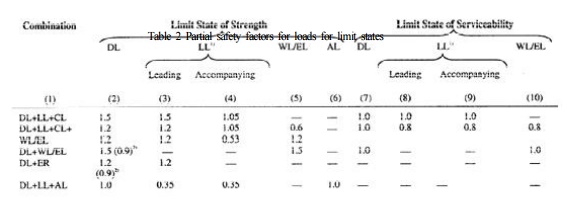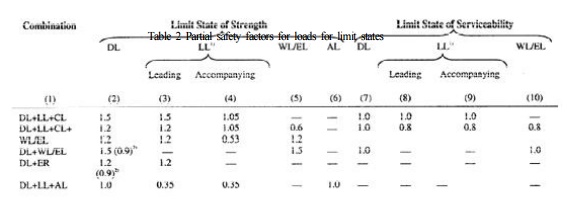Chapter: civil : Design Of Steel Structures
Steel Design: Loads And Forces

LOADS AND FORCES
Clause 3.2 of IS 800:2007
specifies the various loads and forces that has to be considered while
performing the design of steel structures. As per Cl. 3.2.1 of IS 800:2007, for
the purpose of designing any element, member or a structure, the following loads
(actions) and their effects shall be taken into account, where applicable, with
partial safety factors and combinations (Cl. 5.3.3 of IS 800:2007). (a) Dead
loads; (b) Imposed loads (live load, crane load, snow load, dust load, wave
load, earth pressures, etc); (c) Wind loads; (d) Earthquake loads; (e) Erection
loads; (f) Accidental loads such as those due to blast, impact of vehicles,
etc; and (g) Secondary ffects due to contraction or expansion resulting from temperature
changes, differential settlements of the structure as a whole or of its
components,eccentric connections,rigidity of joints differing from design
assumptions.
1. Dead loads (Cl. 3.2.1.1 of IS 800:2007)
Dead loads should be assumed in design as specified in IS 875
(Part 1).
2. Imposed Loads (Cl. 3.2.1.2 of IS 800:2007)
IS 800:2007 specifies in
Cl.3.2.1.2 that imposed loads for different types of occupancy and function of
structures shall be taken as recommended in IS 875 (Part 2). Imposed loads
arising from equipment, such as cranes and machines should be assumed in design
as per manufacturers/suppliers data (Cl. 3.5.4 of IS 800:2007). Snow load shall
be taken as per IS 875 (Part 4).
3. Wind loads (Cl. 3.2.1.3 of IS 800:2007)
Wind loads on structures shall be taken as per the
recommendations of IS 875 (Part 3).
4. Earthquake loads (Cl. 3.2.1.4 of IS 800:2007)
Earthquake loads shall be assumed as per the recommendations
of IS 1893 (Part 1).
5. Erection Loads (Cl. 3.3 of IS 800:2007)
All loads required to be carried
by the structure or any part of it due to storage or positioning of
construction material and erection equipment, including all loads due to
operation of such equipment shall be considered as erection loads. The
structure as a whole and all parts of the structure in conjunction with the
temporary bracings shall be capable of sustaining these loads during erection.
6. Temperature Effects (Cl. 3.4 of IS 800:2007)
Expansion and contraction due to
changes in temperature of the members and elements of a structure shall be
considered and adequate provision made for such effect. The co-efficient of
thermal expansion for steel is as given in Cl. 2.2.4.l of IS 800:2007.
7. Load Combinations
Load combinations for design
purposes shall be those that produce maximum forces and effects and
consequently maximum stresses and deformations. The following combination of
loads with appropriate partial safety factors as given in Table 4 of IS
800:2007 may be considered. The table is reproduced here as Table 2 for ready
reference. a) Dead load + imposed load, b) Dead load + imposed load + wind or
earthquake load, c) Dead load + wind or earthquake load, and d) Dead load+
erection load. The effect of wind load and earthquake loads shall not be
considered to act simultaneously. The load combinations are outlined in detail
in Cl. 3.5 of IS 800:2007.

Related Topics